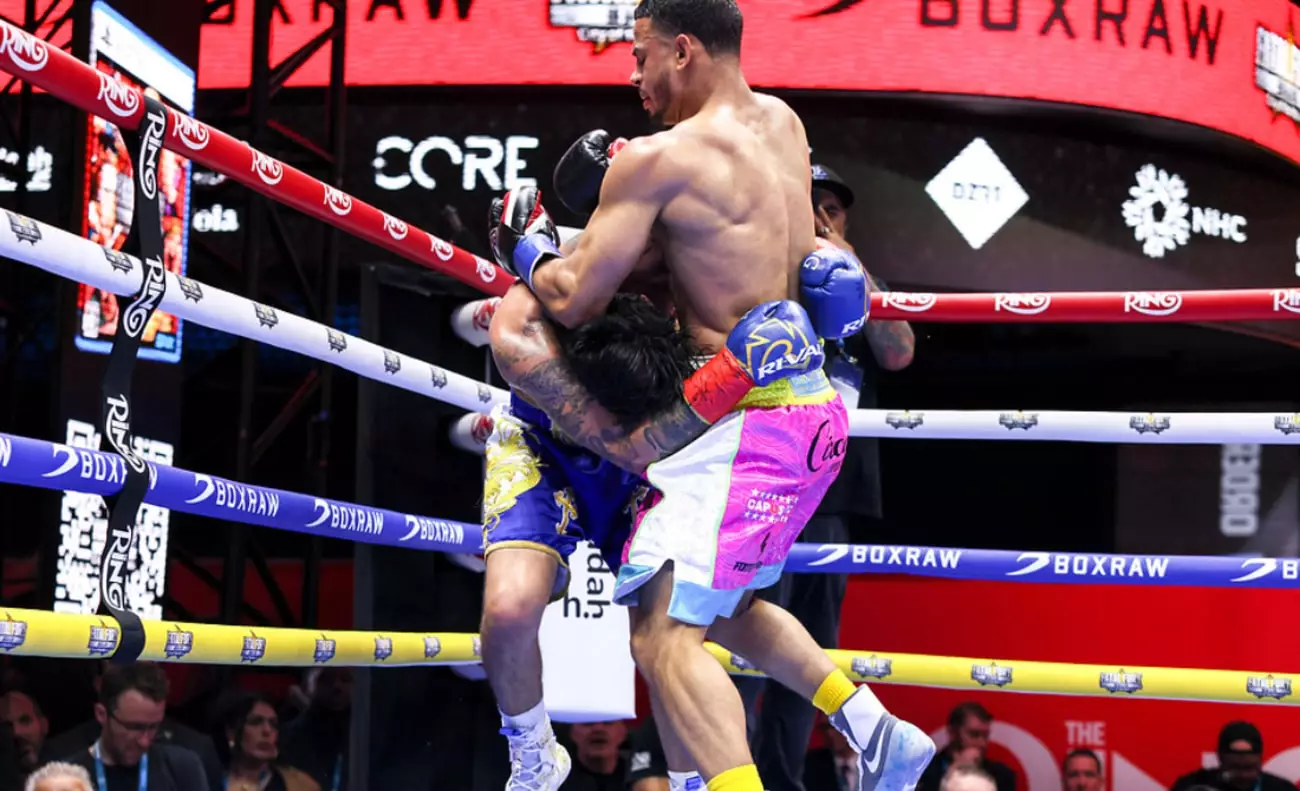In an electrifying showdown at Times Square, Rolando “Rolly” Romero displayed a remarkable transformation, outmaneuvering and outclassing favored competitor Ryan Garcia to capture the WBA ‘regular’ welterweight title. With a record now standing at 17-2 with an impressive 13 knockouts, Romero’s performance highlighted not only improvements in his technical skills but also a newfound discipline that has reshaped his fighting style. This evolution was evident as he delivered fierce power punches early on, establishing himself as a formidable opponent that forced Garcia into a defensive posture.
Romero, who came into the welterweight division with a physique that showcased added muscle and strength, exhibited an astute understanding of distance and timing, making it clear that he wasn’t the reckless fighter fans may have seen previously. The powerful left hooks that landed on Garcia not only set the tone but also made Garcia, who now holds a record of 24-2 with 20 knockouts, second-guess his approach to the fight. Garcia’s hesitation became apparent in the opening rounds as Romero’s strikes carried an undeniable threat, which refrained the younger fighter from fully committing to his own offense.
The Turning Point: A Moment of Impact
The bout reached a pivotal moment in the second round when Romero unleashed a succession of left-handed blows that would drop Garcia to the canvas. The chain reaction of power punches reflected Romero’s strategy to dominate the encounter from the outset. The fight wasn’t merely about landing punches; it was about creating an atmosphere of fear that would haunt Garcia through the duration of the rounds. After that stunning knockdown, it was clear that Garcia altered his game plan, preferring to avoid further damage than to risk a knockout.
The judges’ scorecards, revealing a unanimous decision of 115-112, 115-112, and an overwhelming 118-109 verdict, encapsulated not only the fight’s outcome but also the effectiveness of Romero’s tactics. His resilience in the ring, particularly in absorbing punches that might have spelled disaster in his prior bouts at 135 and 140 pounds, signified a metamorphosis fueled by rigorous training and a strategic mindset.
Aftermath and Future Implications
Post-fight, the implications of this victory extend beyond Romero’s title. With Devin Haney and his father probing Garcia about his loss, the future looks tumultuous for both Garcia and Haney, whose ambitions for a lucrative rematch now hang in jeopardy. The potential match-up, once positioned for October, is now clouded by uncertainty. Will Haney’s team pivot to Romero in the wake of Garcia’s setback? Such a clash could fuel the narrative of Romero’s ascendancy in the welterweight division.
Romero has not only earned a title but also seized the spotlight in a division brimming with talent and potential rivalries. His disciplined approach, along with a newfound strength that has reshaped his physical capabilities, portends a bright future. As fans eagerly anticipate the unfolding chapters of his career, Romero stands poised to be a pivotal figure in this era of boxing—a fighter not defined merely by his power but by his strategic intelligence and tactical evolution in the ring.

